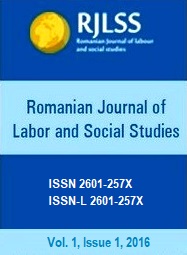Employment flexibility in Poland: Manifestation of flexicurity policies or labour market imbalances?
Employment flexibility in Poland: Manifestation of flexicurity policies or labour market imbalances?
Author(s): Łukasz SienkiewiczSubject(s): National Economy, Labor relations, Economic policy, EU-Accession / EU-DEvelopment, Human Resources in Economy, Socio-Economic Research
Published by: Institutul Național de Cercetare Științifică în Domeniul Muncii și Protecției Sociale - INCSMPS
Keywords: labour market policy; Poland; flexicurity; flexible employment;
Summary/Abstract: This article focuses on the issue of employment flexibility in Poland – a phenomenon regarded as significant feature of the national labour market for the last few years. The aim of this paper is to analyse not only the scale and structure of flexibility, but – most importantly – its main sources and determinants. In many countries (especially EU-15) flexibility of the labour market (including employment flexibility) is considered a manifestation (and even – a result) of carefully planned and implemented flexicurity policy, aimed at balancing social security with flexibility. Available data on employment flexibility coupled with the analysis of labour market policy does not seem to corroborate this assumption in case of Poland. High flexibility of employment – mostly in relation to increasing use of flexible employment forms (especially civil-law contracts) is rather a manifestation of the existing labour market imbalances – stemming from the general economic situation, as well as imbalances in relation to social dialogue (with relative weakness of employee representation). In order to analyse this issue, this paper is organised as follows. First, the background of flexible employment in Poland is characterised in form of labour market challenges description. Then, the structure and scale of flexible employment is analysed. Next, the socio-economic consequences of flexible employment in Poland are characterised. Finally, the development of flexicurity policies is analysed, which allows for the formulation of conclusions.
Journal: Romanian Journal of Labour and Social Studies (RJLSS) (online)
- Issue Year: 1/2016
- Issue No: 1
- Page Range: 98-118
- Page Count: 21
- Language: English

